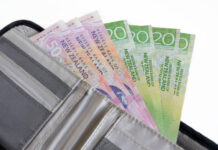Markets:
After yesterday’s US-data inspired bond market sell-off, (bond) markets temporary shifted into a lower gear, awaiting confirmation from the US payrolls report. Still, in the this ‘wait-and-see pause’, the natural drift in yields remained north. ECB speakers in the meantime held to their recent mantra. ECB de Guindos repeated that underlying price pressures remain strong even as most core indicators show some softening. The perfect narrative for keep all options open for September. Chair Lagarde in an interview stressed the need for fiscal authorities to withdraw pandemic support programs. US payrolls were close to expectations. A 209k June job growth combined with a net 110k downward revision for the previous two months was slightl disappointed especially after recent strong data beats. Even so, the unemployment rate again easing from 3.7% to 3.6 only confirmed ongoing labour market tightness. AHE (wage growth) at 0.4% M/M and 4.4% Y/Y even printed on the higher side of expectations. To summarize: the payrolls missed expectations after a strong report last month. The consumer survey printed OK after a soft report last month. In a brief Pavlov reaction, US yields dropped 5 bps +, but markets soon realized that the report in no way pointed to the easing of labour market conditions needed to sustainably slow inflation. The Fed probably remains behind the curve. US yields currently trade mixed with the 2-y easing 4 bps but the 30-y adding 4 bps. Recent peak levels for the 2-y and the 10-y yield touched yesterday, near 5.11% and 4.10% respectively, are still under attack. The German yield curve also re-steepens with the 2-y ceding 4 bps and the 30-y adding 5 bps. On other markets, equities mostly maintained yesterday’s loss. An attempt of the Eurostoxx 50 to reverse some is far from convincing (+0.2 currently). The S&P opens almost unchanged. Oil ($76.5/b) continues fighting the $77/78 resistance, but no break occurred. A (supply-driven) break higher wouldn’t be comforting for the overall inflation narrative.
In FX, the recent relative standstill among the major cross rates continues, with the dollar slightly underperforming. DXY declines to 102.75 (open near 103.05) amongst other driven by a further correction in USD/JPY (142.55 from an open near 144). EUR/USD also gains marginally (1.0915). EUR/GBP (0.8535) is holding within reach of recent lows (0.8518) but no real test occurred yet. CE currencies enter calmer waters after yesterday’s sell-off.
News & Views:
Canadian payrolls beat forecasts in June. Employment increases by 60k, driven by gains in full-time work (+110k). Employment rose in wholesale and retail trade (+33k), manufacturing (+27k), health care and social assistance (+21k) and transportation and warehousing (+10k). Meanwhile, declines were recorded in construction (-14k), educational services (-14k) and agriculture (-6k). The unemployment rate rose to 5.4% as more people searched for work. The participation rate ticked up from 65.5% to 65.7%, matching the highest level since February 2022. Average hourly wages rose 4.2% Y/Y in June, following an increase of 5.1% in May. The loonie rallied after the release with USD/CAD down to 1.332 from 1.338. Canadian swap rates rise by 5.8 bps to 7.5 bps with the belly of the curve underperforming the wings. Canadian money markets almost discount an additional 50 bps of rate hikes by the end of the year (to 5.25%), likely starting with 25 bps next week.
The FAO Food Price Index continued its downtrend in June, averaging 122.3 in June, down from 124 in May. The index is down 23.4% from its peak in March 2022 (159.7). The month-on-month decline in the index in June reflected drops in the indices for sugar, vegetable oils, cereals and dairy products, while the meat price index remained virtually unchanged. For sugar, it’s the first decline following four consecutive monthly increases, mainly triggered by the good progress of the 2023/24 sugarcane harvest in Brazil and a sluggish global import demand, particularly from China, the world’s second largest importer of sugar. The vegetable oil index dropped to the lowest level since November 2020 driven by lower world prices of palm and sunflower oils, more than offsetting higher soy and rapeseed oil quotations..














